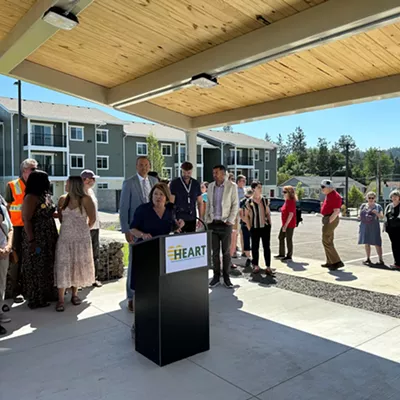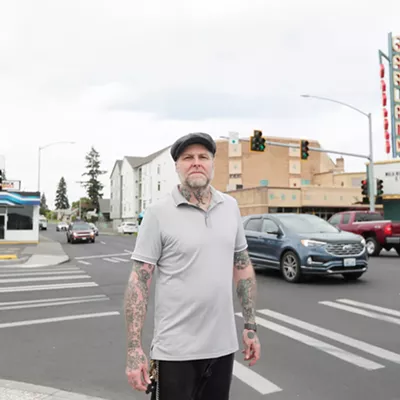Spokane Transit Authority officials are out and about, sampling public opinion regarding the services it provides. No doubt, funding shortages are a major factor in this sudden concern. These shortages, we know, have less to do with our local STA operation than with Tim Eyman's tax-cutting initiatives, typically supported by the very citizens who need STA services the most. But this broader issue aside, STA's immediate concern is the effective delivery of services.
Critics around here argue that the problem begins -- and maybe ends, too -- with a bloated STA bureaucracy. I don't know about that. If you look at the STA budget over the past several years, you will see that the serious increases have everything to do with the light rail project and little or nothing to do with an expanding bureaucracy (except as the light rail project has required).
So let's set aside the issue of overhead for now, and look at how to reach the goal of increased ridership.
STA's buses are, for the most part, too big and way out of scale. Moreover, they appear to run without many passengers. I know that STA claims that they spend no more on large buses than on small buses. But this isn't really the point, is it? Large, overscaled buses impose on surrounding environs. And for crying out loud, STA operates largely empty buses! Reminds me of that lonely Maytag repairman; he's nothing compared with most STA drivers.
Some months back, unconvinced by the STA apologists (who insist that the riders are there, no doubt sitting behind those darkened, commercialized windows), I determined to give this matter a more serious empirical twice-over. Maybe I wasn't seeing what I thought I was seeing. So, in the spirit of inquiry, I hired (bribed?) our teenage son and his friend to ride buses all day long and keep records. They were to begin during rush hour and end during rush hour. Out they went -- all day long they rode the buses, from south to north, from east to west, from affluent to poor, they rode and observed. And you know what? They didn't see many more passengers than had I observed: five here, 10 there, two to three most of the time -- more during the rush hours, but even then the numbers even then thinned out quickly.
4 STA might want to consider what might be termed "the psychological factors." If you run seemingly abandoned buses, the public will be put off. Run full buses, and everyone wants to join in on the fun. Related to this, it follows that buses should be scaled down if for no other reason than what's marginally acceptable on a thoroughfare is off putting in a neighborhood, where additional routes need to go.
4 Wrap-around bus advertising is ugly, likely illegal, and should not be permitted. On at least two occasions, Councilman Steve Eugster has proposed that the City force the STA to cease and desist with the moving billboards. Both times he has lost on narrow votes because, in the end, the majority bowed to the argument that the STA needs the money. But we know that revenue comes in many forms. Ridership matters, and STA might want to consider the possibility that many people won't ride in (or support funding for) a tacky operation that runs these darkened, overscaled vehicles which have been turned into an insult to everything aesthetic.
4 STA should take its clues from cities that have learned the importance of free downtown core bus service. The "free bus zone" program could be extended to the near-in residential neighborhoods so as to encourage more pedestrian life downtown. Also -- and this looms very important -- put more people in buses headed to downtown and you make a stronger case for regional light rail. Portland offers the model. And people who ride buses for free may discover how handy it can be and decide to commute on regular routes, too.
4 Make better use of the railroad terminal. An argument has been made by critics such as Dave Hamer that the transit center should have been located at the railroad terminal with small vehicles there to take passengers throughout the core. Whatever the merits of this argument, the building has been built. This fact doesn't mean, however, that alternative hub models shouldn't be examined. And if something workable emerges, could the STA Plaza be sold for another use? It's worth looking at.
4 End bus bench advertising, and provide bus shelters where necessary. Ugly bus bench advertising is out of compliance with the new Comprehensive Plan. Moreover, the city makes little or no money on all this free "billboard" space it effectively sells. The fact is that bus benches are cheap, and for the most part unnecessary. No one sits on a bench in inclement weather. And if the bus services were improved, passengers would not have to wait all that long. Needed in Spokane at certain locations -- our city of long winters -- are bus shelters. STA should meet this need.
Comments? Write to letters@inlander.com
Publication date: 05/29/03














